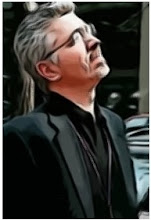
Jacob Riis's How the Other Half Lives (1890) was a non-fiction expose of the very same Lower East Side that Crane explores novelistically in Maggie. In addition to his prose, Riis includes photographs with his text. Many of these photographs belonged to a set of images he used to illustrate - - via "magic lantern" - - his very popular lectures.
Both Riis and Crane belong to the Progressive Era and identify with the social reform advocated by Progressives. At the same time, a comparison of the two writers will probably show as many differences as similarities in their attitudes toward poverty, class, the ghetto, and reform.
Let's put these two authors into dialogue with each other. Here's what you need to do:
1) head on over to this page on how to read a photograph. Review the terms used to describe the various elements of a photograph; think about how the way a photograph is composed might affect what a photograph means.
2) go to the New York Times' online Riis gallery;
3) examine the 13 images collected there and ask yourself some questions:
- - what places, people, and activities are represented in the photos?
- - how are the photographs framed or posed? in other words, how does Riis
arrange people, places, or events for the camera?
- - what kind of audience is Riis aiming for when he takes his photos? what in the
photos gives you clues about Riis's intended audience?
- - what kinds of emotions and attitudes does Riis want to provoke in his viewer?
3) select four photographs: two that would seem to be perfect illustrations for Crane's novel; and two that would seem to challenge, disagree with, or critique Crane's depiction of the Lower East Side.
- - explain how and why your two photos would work well with Crane's text. Most importantly, what similar attitudes toward class or poverty or reform do the photo and Crane's text share?
- - explain how the other two photographs seem to disagree with Crane's novel. That is, how do these two photos present alternative views or interpretations of the themes of class, poverty, reform, gender, etc. presented in Maggie.
4) Write up your analysis: typed, two pages, check for errors.






